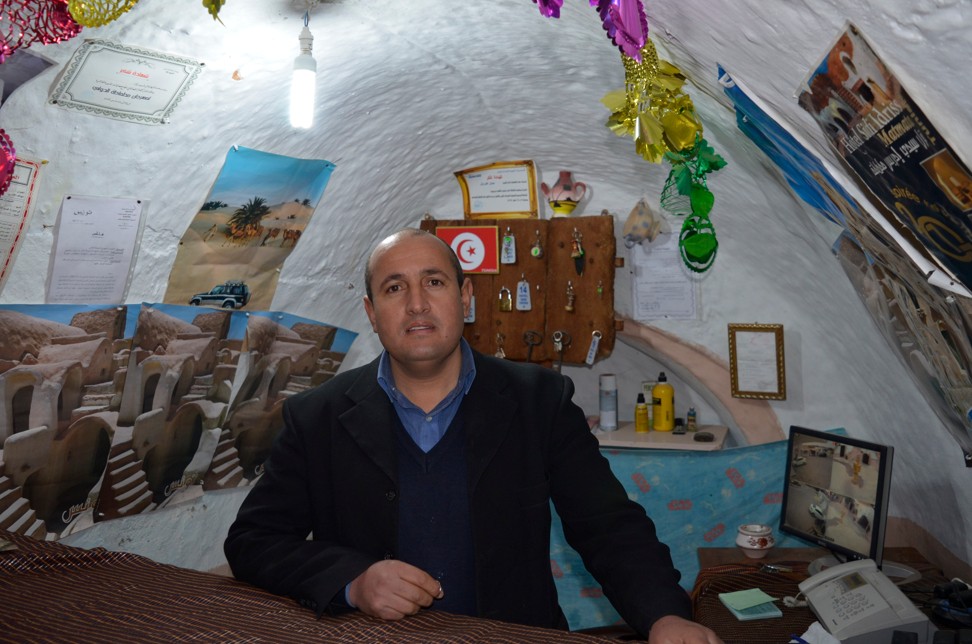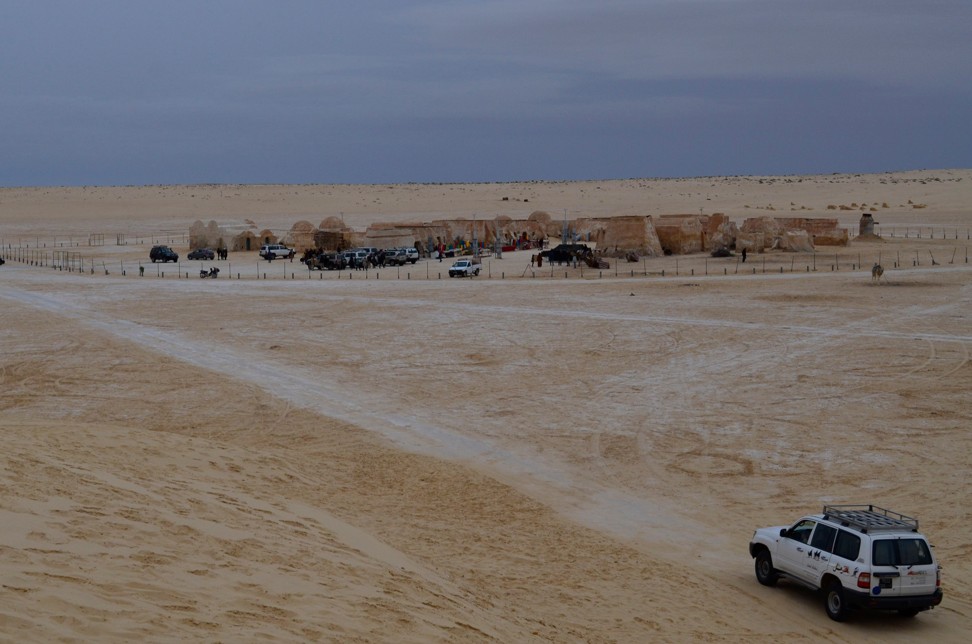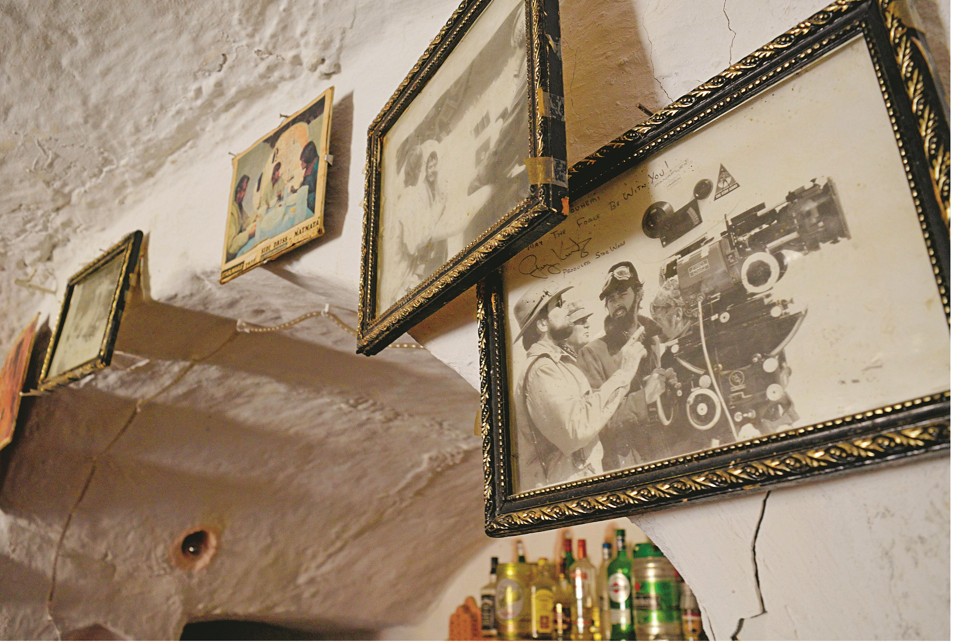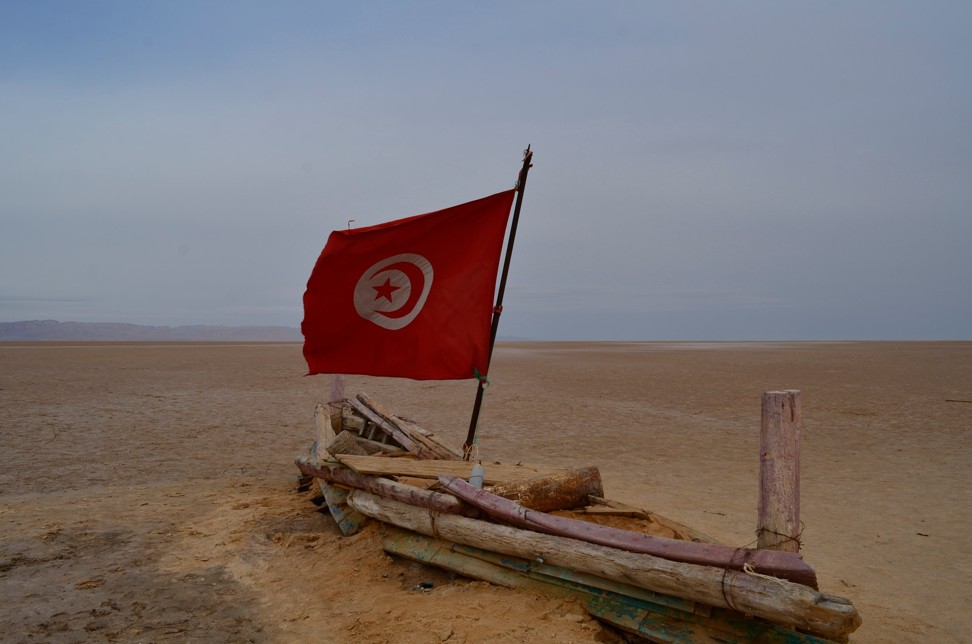
Star Wars: why the desert in Tunisia was the perfect location for original film, and how to visit the area
In the film it was Luke Skywalker’s home planet, but now an underground hotel offers tourists photo opportunities and an insight into life as a troglodyte on the edges of the Sahara Desert
There’s a reason the original Star Wars film was filmed in the deserts of southern Tunisia. This stark, remote landscape looks like another planet.
One of Tunisia’s vast desert regions is even called Tataouine, like Luke Skywalker’s home planet, Tattoine. And the underground home where Luke Skywalker first appeared living with his uncle and aunt is a real hotel in the town of Matmata, one of various desert locations used in the films.
“It looks just like the film,” says Lorenzo Bresciani, one of two young touring Italian professional tennis players who recently visited the Hotel Sidi Driss. “When you see it on the film, you say, ‘OK.’ But when you are here, it has another effect.”
Eight destinations for a cheap holiday, from Asia to Europe and North Africa
Hotel owner Masoud Berachad says visitor numbers have fallen since Tunisia’s democratic revolution in 2011 and since terror attacks killed tourists in 2015.
Still, Star Wars fans keep the hotel in business. “They come and take so many pictures,” says Berachad. “You can see how happy they are. They can stay here for hours and hours.”

Before becoming a hotel in 1969, the dwelling was a traditional home used by indigenous Berbers. The Berbers played a major role in the history of North Africa and Europe after forming powerful alliances with Romans and Arabs.
Remember the Jawas from Star Wars, the hooded fellows who trade in scrap metal and capture C-3PO and R2-D2? Their dark cloaks and pointed hoods resemble the garments of traditional Berbers, as does Obi-Wan Kenobi in his cloak.
The Berbers’ underground dwellings, like the Matmata house, were carved from sandstone to offer shelter from heat and a place to hide from enemies. Few people live that way today, but some dwellings have been preserved as museums, including one owned by Mahboub Theouibi, whose family moved into a modern house about 25 years ago.
From Big Ben to the Taj Mahal, tourist destinations to avoid – for now
Like most of the dwellings, theirs was built with a central courtyard open to the sky. “Brothers lived in the same room, cousins in another,” she says. “Each room had a purpose.”
She points to a small room accessible only by ladder, where the family stored food, and a stone for milling grains. “Everything was made by hand,” she says.

It’s a long journey across wide-open plateaus to this desert terrain. Long, straight motorways pass industrial cities such as oil-rich Gabes and phosphate-producing Gafsa. Vendors by the roadside sell tea boiled in fire-warmed pots, pastries and beautiful ceramics.
Star Wars and Pharrell Williams enlisted to help Tunisia win back tourists with image makeover
Stacks of jerry cans hold cheap petrol smuggled in from neighbouring Algeria and Libya. In lonely looking and half-finished towns along the way, the only businesses seem to be coffee shops filled with men smoking hookahs and playing cards.
A jumble of walls and stone homes mark a Berber town on a hill called Tamezret. Here Mongi Bouras, a 50-year-old Berber artisan, has meticulously turned an old cave home into a museum to showcase his people’s history.

He says animistic, Jewish, Christian and Muslim symbols became part of Berber crafts and patterns, and his work reflects that: in his laboriously woven garments and carpets there is a Star of David, a Christian cross, an Islamic crescent moon and naturalistic representations.

Farther on, the Sahara gets closer. The horizons stretch longer. Traffic is sparse. Mountain profiles etch the landscape.
Security worries cloud Star Wars returning to place where it all began
Out of nowhere, a town appears: Douz. A restaurant menu lists camel’s milk, lamb’s head and grilled fish trucked in from the Mediterranean. Another city on the edge of the Sahara, Tozeur, is busy with shops, lit-up mosques, cafes, markets, traffic.

As the sun falls, the dunes and desert take on strange shapes and colours. It’s as if they truly belong on another planet.
Getting there
Air France flies to Tunis Carthage International Airport from Hong Kong, via Paris. In Tunis there are buses and trains to Gabes, from where you can take a louage (shared taxi) to Matmata.

